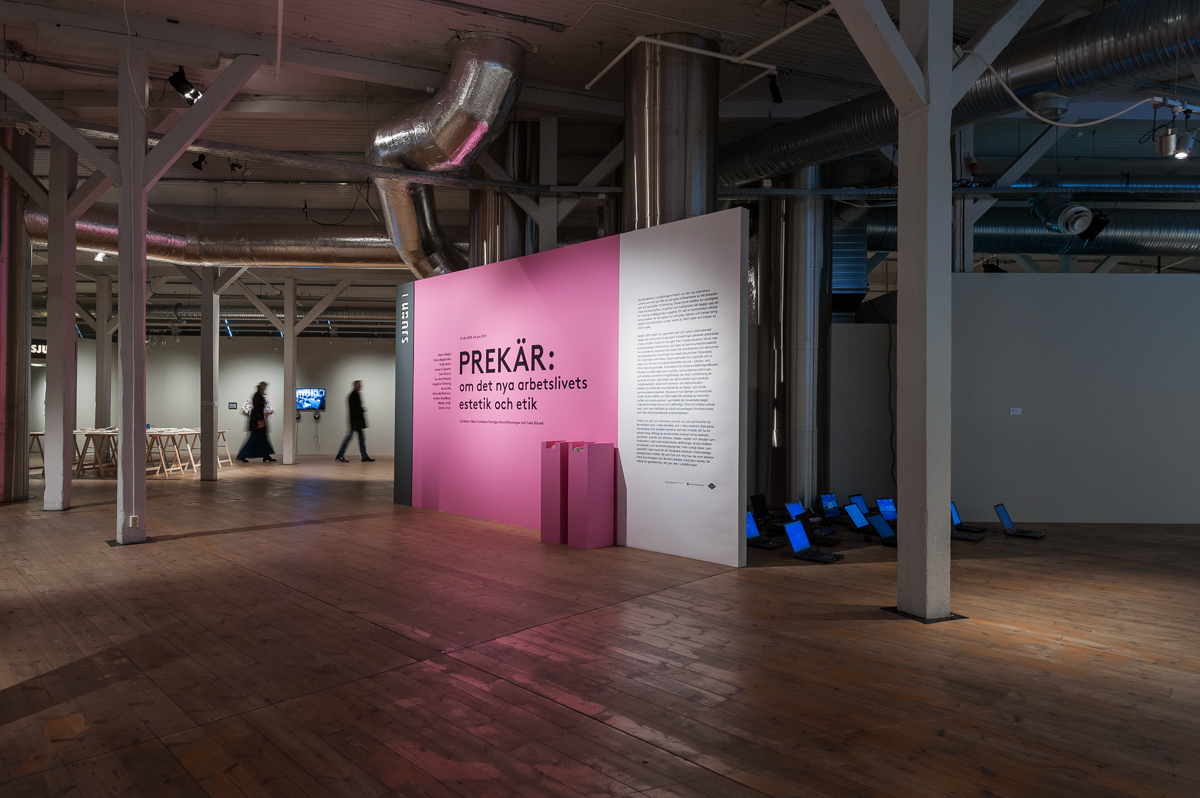Prekär: om det nya arbetslivets estetik och etik


Exhibition curted for The Museum of Work in Norrköping 27 October 2015–2 January 2016.
Daria Bogdanska, Kalle Brolin, Ioana Cojocariu, Celie Eklund, Annika Eriksson, Angelica Falkeling,Anna Ihle, Anders Rundberg, Homa Bapda & Amanda Peterso, Marika Troili.
Since the 1970s (generally and on an international scale), a large number of structural changes have affected working life throughout the world: Industry has gone from mass production to more customized manufacturing; new types of communication technology have been developed; the capital market has been privatized and the economy has been globalized. At the same time, the work situation has changed for millions of people. New markets have emerged and we live in a time that has been alternately called a service and information society. The terms of employment have also changed. Flexible employment such as fixed-term and project employments, and work through staffing companies, have increased in scope over the last 30 years. At the same time, the work itself has changed character. Industrial work, as well as office and administrative work, has become increasingly dependent on digital and other communication technologies. In addition, during the second half of the 20th century, the factory and the office have been joined by the home, the café and other places in the community where wage work is ongoing.
Precarious: On the Aesthetics and Ethics of New Labour brought together ten artists who, in different techniques and in different mediums, discussed, thematized and problematized what it means to have a job today. Many of the artworks revolved around the symbols, aesthetics and attributes of labour. Clothes, items and details that have changed as work life has cahnged. Other works portrayed the limits and control mechanisms, but also the risks, which have arisen in tandem with an increasingly flexible working life. Changing class boundaries, between haves and not haves; those who work with their bodies and those who work with their thoughts, were also themes that got their shape in a couple of works in the exhibition.
